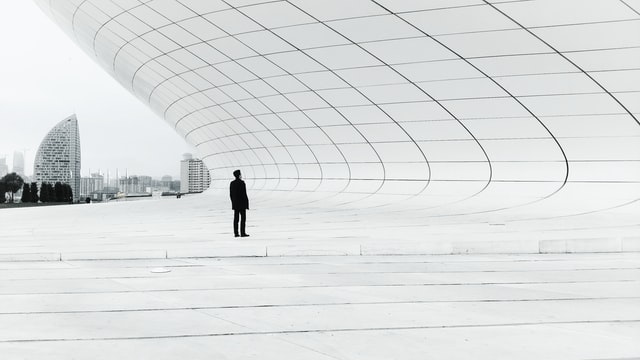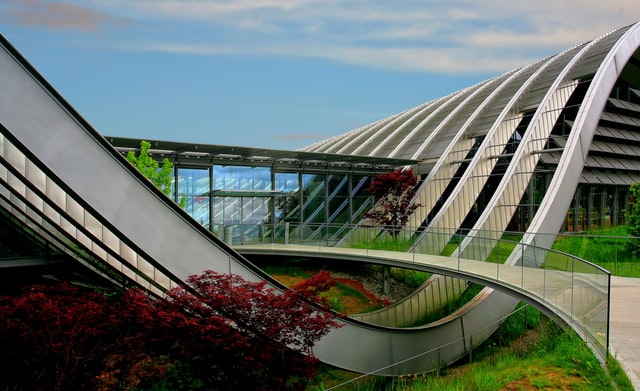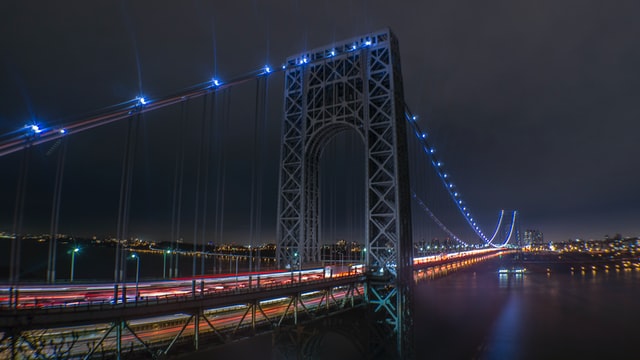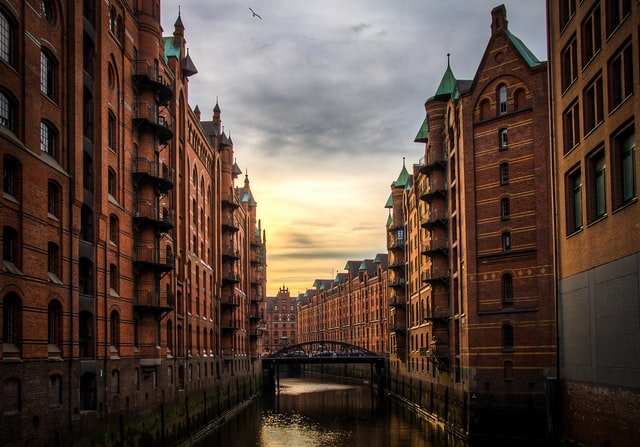This article uses affiliate links
A Comprehensive Guide to Photography of Architecture
Photography of architecture is, in the most basic terms, photography that focuses on the interior and exterior of architectural structures. It’s one of the oldest and most popular genres of photography.
This guide will introduce you to the genre of Architectural Photography and help you improve your architectural photography skills, whether you are just getting started or already have some experience.
Table of Contents
Introduction to Photography of Architecture
To begin, it’s worth noting that photography of architecture is quite different than photography of real estate. Although each photograph the same subject, the approach and the goals differ greatly.
Read our article, The Differences Between Real Estate and Architectural Photography, if you’d like a deeper explanation.
As opposed to real estate photography, photography of architecture is much less rigid and rules based. It leaves room for (and even encourages) creativity and experimentation, much like the practice architecture itself.
It’s easy to understand why photography of architecture has remained so popular over the course of history when you consider how important architecture is to us. We are surrounded by architecture all the time and use it on a daily basis. At this point in human history, architecture is a necessity.

At first, architectural photography was just a way to document buildings, but it has since evolved into an art form in and of itself. The top architectural photographers in the world are paid hundreds of thousands of dollars to capture photos that accurately represent the architects intentions.
A quick look at architectural magazines or media outlets like Architectural Digest, Dezeen, or Architectural Review will provide you with jaw-dropping images from all over the planet. Every photo on each of these sites was meant to convey the feeling or emotion that the architect wanted to portray.
At the same time, photography of architecture doesn’t need to convey a deep feeling or be good enough to appear in a magazine. It can also just be a photo that you find aesthetically pleasing of a piece of architecture. Architectural photography is a broad genre with many possibilities.
The Gear Needed for Photography of Architecture
One of the best parts about architectural photography is that it’s extremely approachable to beginners. It’s not one of the genres of photography which demand the best and most expensive gear, but instead only requires the basics:
- A good camera, probably a DSLR or newer Mirrorless model
- Two quality lenses
- A sturdy tripod
A Good Camera
To start out, you’re going to want a solid camera. This doesn’t mean that you need to go out and buy the newest and most expensive camera on the market. In fact, it means that you can actually buy a somewhat modest camera like the Nikon d750, Canon 6D Mark II, or Sony A7 iii.
The most important thing you’re going to want out of your camera is a full frame sensor, at least ~24 megapixels, and the ability to change lenses. This will give you the flexibility you need to grow as an architectural photographer.
For a list of the best cameras and a few affordable options, check out our article Best Cameras for Real Estate and Architectural Photography.
Two Quality Lenses
Once you’ve chosen your camera, you can move on to arguably the most important piece of gear for architectural photography, the lens. The lenses you choose to purchase are extremely important since they’ll be determining the focal length and quality of the image.
Ideally, you want a wide angle lens for those large scale photos of entire buildings or huge interiors and a telephoto lens to focus on the tighter detail type angles. Sometimes, you’ll be able to find an all-in-one type lens that fits your shooting style, but realistically, two separate lenses is the way to go here.
You’ll want one lens that’s as wide as 16mm at least and another that’s as tight as 70mm at least. For a list of the best lenses and a few affordable options, check out our article Best Lenses for Real Estate and Architectural Photography.

A Sturdy Tripod
A sturdy tripod can be considered optional, at least to start. If you’re only interested in photographing exteriors, then it’s likely you can get by without a tripod. However, it will limit you in some ways like if you want to capture any type of long exposures or shoot at night.

If you plan to photograph interiors on the other hand, a sturdy tripod is an absolute necessity. This is because you will need to use longer shutter speeds than you’ll be able to achieve by handholding the camera. The amount of light available when shooting interiors will always be different.
From the amount of windows, to the direction that the windows are facing, to the time of day, and even the weather; you won’t be able to control the amount of natural light available and that means you’ll need a tripod.
Understanding lighting and why a tripod is important is crucial for interior photography. So if you think you might need to understand it a bit more, check out these articles:
Comprehensive Guide To The Best Lighting For Interior Photography – Best Tripods for Real Estate and Architectural Photography.
Techniques Used for Photography of Architecture
The techniques used for photography of architecture are a big reason that it’s such a popular genre of photography. There is so much room for creativity and freedom of expression. The best thing you can do is pick a subject and then take your time getting to know it.
Once you’ve decided on a building or structure to photograph, try out these two different techniques:
- Explore it at different times of day, or even during different seasons
- Change your perspective; whether that means moving closer or further away, or getting up higher or lower
Photographing at Different Times of Day
If you’re an even slightly experienced photographer, you know that photographs can look completely different depending on the time of day they were taken.
If you find a specific building particularly photo-worthy, try revisiting it at different times of the day, during different types of weather, and even during different seasons. It takes a bit of dedication, but capturing your subject in the perfect light will be worth it.
This doesn’t only apply to exterior photos either. The sun will come through windows differently depending on the time of day, so interior photos also change throughout the day and seasons as well. Plan to pay your subject several visits, whether inside or out.

Change Your Perspective
Another great technique is to photograph your subject from different perspectives. Whether that means photographing it while laying down or going up a few floors and shooting out the window of a neighboring building, changing perspectives can offer completely different photos.
This is another example of how having two different lenses can play a big role. Capturing a photo from close range using a wide angle lens will create a completely different photo than if you used a telephoto lens from a distance. The more you practice using each lens, the better your images will look.
If you really want a drastic change of perspective, you can take to the air and buy a drone. There are drones available for all price ranges, so if you were interested in becoming an aerial photographer, it’s more affordable than ever.
If you plan to use your drone for commercial purposes however, you will need to obtain your FAA Part 107 Certificate. Check out our article Best Drones for Real Estate and Architectural Photography to get an idea of what you can get for your budget.
Additional Resources on Photography of Architecture
Be sure to check out our Beginners Guide. It’s full of articles with helpful ideas and tips exactly like this one. Our Business Resources page has all the resources you’ll need to get your Real Estate and Architectural Photography business started on the right path.
Finally, go check out our Gear page to get up-to-date reviews and recommendations on todays best gear for Real Estate and Architectural Photography.
Frequently Asked Questions
How does photography help architecture?
Photography helps architecture by not only documenting the structure, but also by highlighting specific parts of the architecture that may be overlooked. It helps to accent and emphasize the artistic nature of the structure.
How do you take photos of architecture?
It can be as easy as choosing a subject and exploring it from various angles. Follow the tips above in this article and you can take great photos of architecture.
What makes a good architectural photographer?
Having at least a general knowledge of architecture is extremely helpful for an architectural photographer. Understanding how and why the architect designed the structure helps the photographic process.
